Posted by Jeffrey Swerdan on Nov 9th 2023
How to Choose Chimney Brush
How to know: What Size Chimney Brush that you need?
The time has come to clean your chimney, but you're not sure where to get started. You know that you have seen chimney sweeps use brushes, but when you started to look at options, you realized there were several different shapes and sizes available and aren't quite sure where to start.
Have no fear! We have created this article to help you make sense of all of the styles, sizes, materials, and brand options, We will take you through the measuring process, the shape options, and the style options. We will also let you know some of the other products you may need to complete the project.
Check out this video that takes you step by step on selecting the proper chimney brushes
The Northline Express YouTube Page has all sorts of videos including installation guides, product demos, and even a video on Choosing the Right Size Chimney Brush.
Whether you have a masonry chimney, a wood stove, or a gas system with a stainless steel liner there is a brush for your project
All chimney systems have a chimney brush that is designed to work with the system. There are flexible brush rods if your chimney isn't straight. There are also a wide variety of chimney cleaning supplies that can assist with your chimney cleaning project.
There are three things to determine in order to choose the proper chimney brush for your flue
You will need three pieces of information in order to choose the proper size chimney brush. You will need to know the shape of the inside of your chimney. You will also need to know what material the chimney is constructed of and you will need to know the dimensions of the inside of the chimney.
The First thing you need to know is what material the chimney is lined with
The first thing you will need to do is inspect the vent pipe to determine what material the chimney is lined with. You will want to safely climb onto your roof and remove your chimney cap. Once you remove the cap and look within your chimney cavity you will be able to see what material the chimney is constructed of.
The reason you need to inspect your chimney from the top is that the chimney walls may be constructed of brick or stone, but there could be a chimney liner inside of the chimney cavity that is stainless steel. There are different brushes for different chimney construction materials. So once you know if it is metal or if it is brick then you can move on to determine what shape the inside of the chimney is.
There are two materials that chimney brushes are made of: wire and poly
The type of chimney brush you need to select will depend on the material on the inside of your chimney. There are wire chimney brushes and poly chimney brushes.
Wire chimney brushes are made of heavy-duty steel wire bristles. The wire bristles are strong and durable making them suitable for removing heavy creosote buildup and tough debris in a masonry or stone chimney.
Poly Chimney Brushes are constructed using synthetic materials such as nylon or polypropylene. The bristles are softer and more flexible than wire brushes.
If you have a stainless steel or metal-lined chimney then the best way to clean them will be to use a Poly Chimney Brush. If you try and use a metal wire chimney brush on a metal pipe, you will end up scratching the pipe and every scratch is a place where creosote and ash can accumulate. A Poly Brush is great for cleaning stainless steel chimney pipes.
If you have a masonry or stone chimney then the best way to clean them will be to use a Wire Chimney Brush. If you use a poly brush on a masonry chimney there is a good chance that the bristles won't be strong enough to properly clean off the ash and creosote buildup on the brick and stone.
The second thing to know is what shape the chimney liner/walls are
The next step is to determine the shape of the chimney walls. You will either have a rectangular shape, a square shape, or a round-shaped chimney. Again it could look rectangular on the outside, but once you look inside you could have a round chimney stack coming up the cavity.
Knowing the shape of your flue helps determine if you need a round, square, oval, or rectangular chimney sweep brush
The most common shapes of Chimney brushes are Oval, Round, Square, and Rectangle. You will choose the shape that most closely resembles the shape of your chimney flue. If you have a round metal pipe then you will want a round chimney brush. If you have a rectangle chimney flue then you will want to choose a rectangular chimney brush and so on.
There are also companies that make custom-shaped chimney brushes for those chimney flues that have an odd shape.
The last thing before you can start cleaning your chimney is to know what size your flue is
After determining the shape, you will need a measuring tape to collect the measurements of the inside diameter of the chimney.
If you have a rectangular-shaped chimney or a square-shaped chimney then you will need to measure the width and the depth of the inside walls of the chimney.
Once you know the size of your chimney then you know what size of a chimney brush to purchase. You want the chimney brush to be the exact same size as your chimney flue. If you have a 6-inch inside diameter chimney pipe then you will want a 6-inch round chimney brush. If you have a chimney flue that is 8 inches wide by 12 inches deep then you will want a rectangular chimney brush that is 8 inches by 12 inches.
If your chimney brush size is too small then you will not be able to properly clean the chimney. You also improve the risk of leaving residue on the sides of your chimney walls. If creosote is left untreated it becomes more flammable the longer it sits. Creosote is one of the main causes of chimney and house fires. This is why it is so important to properly clean your chimney brush with the correct size, shape, and material chimney brush.
There are chimney brush kits available to help for various chimney projects that come with the brush, rods, and adapter
A Chimney Brush Kit comes with the chimney brush, the rods, and an adapter to connect the brush and rods.
Don't forget the other chimney-cleaning accessories you need to complete your project
There are a wide variety of chimney cleaning supplies that can help make your cleaning job easier. There are creosote removers that can make it easier to brush away the creosote buildup on your chimney walls.
It is a good idea to inspect your chimney cap during the chimney cleaning process
When you are up on your roof and preparing to measure for your chimney brush, this is a good time to inspect the chimney cap to make sure that it is still in good shape. If it is starting to get worn out then it is a good time to replace the chimney cap.
We offer a wide variety of Chimney Capsthat will work for your project.
Our professional customer service team is available to help
If you are looking for a specific chimney cleaning product and you can't find it on our website then please give us a call toll-free at 1-877-734-2458 or you can email us.
FAQ - Chimney Brushes
What is the difference between chimney brush wire and poly?
Wire chimney brushes are made of heavy-duty steel wire bristles. The wire bristles are strong and durable making them suitable for removing heavy creosote buildup and tough debris in a masonry or stone chimney.
Poly Chimney Brushes are constructed using synthetic materials such as nylon or polypropylene. The bristles are softer and more flexible than wire brushes and are usually used on metal or stainless steel chimney walls.
What kind of brush is used to clean a chimney?
The kind of brush you need depends on the size, shape, and material of the inside of your fireplace chimney. The article above goes into detail on how to choose the best option for your chimney project.
Can I clean my chimney myself?
Cleaning a chimney is a job that a lot of homeowners take on themselves, but it does require a good amount of knowledge of chimney systems. If a chimney system is not cleaned correctly it could lead to an excess buildup of creosote or ash and debris. If these are not removed completely each time the chimney is cleaned it can lead to a chimney fire which could spread through the home. Cleaning a chimney involves standing on the roof for a prolonged amount of time as well as being able to position and maneuver a long chimney brush and rod system.
As long as you feel comfortable performing the task and are willing to take responsibility for any state and local guidelines, then you can perform this task yourself. There are also professional chimney sweeps who can complete the task for you. Many of these professional companies also use video equipment that allows them to make sure that the chimney is cleaned properly as well as checking for any cracks, or other concerns within the chimney system.
How to chimney sweep?
To start the chimney sweeping process, preparation is key.
The first is to gather all the necessary tools. This includes a suitable chimney brush which we've discussed how to select previously, chimney rods to help maneuver the brush, and protective gear like gloves and goggles.
Next, ensure your work area is clean and safe. Lay down a protective sheet or tarpaulin to catch falling soot and debris. You might also need a ladder to access the chimney from the roof, ensure it is secure before climbing.
Now, attach the chimney brush to the first rod and begin to scrub the inside of the chimney. To ensure all areas of the chimney are cleaned, use an up-and-down motion as you progress further down the chimney.
Lastly, regularly check the collected soot and debris. This prevents any blockages and also gives an indication of how much cleaning is left.
Remember, chimney sweeping can be a complex task. If you're unsure, consider hiring a professional.
How to clean a fireplace chimney and flue?
If you check out the Northline Express Resource Center you will find helpful articles to help with a variety of projects, including:
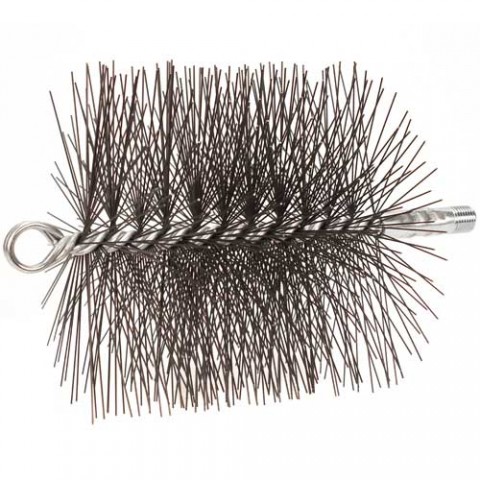
WIRE BRISTLE CHIMNEY BRUSHES
Wire bristle chimney brushes are most commonly used and generally do a great job. Homeowner versions and Master Sweep versions are available. The Master Sweep version has more bristles and will generally make the job easier and faster. Wire bristle brushes are not recommended for metal chimney flues.
Shop Now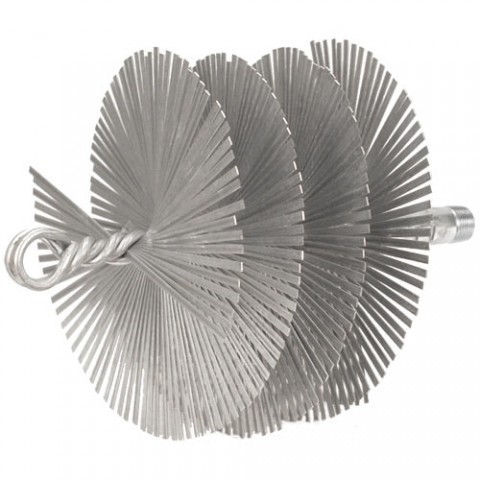
FLAT WIRE BRISTLE CHIMNEY BRUSHES
Flat Wire Bristle chimney brushes are stiffer than regular wire bristle brushes and the flat tines provide better scraping action: great when glaze creosote is present.
Shop Now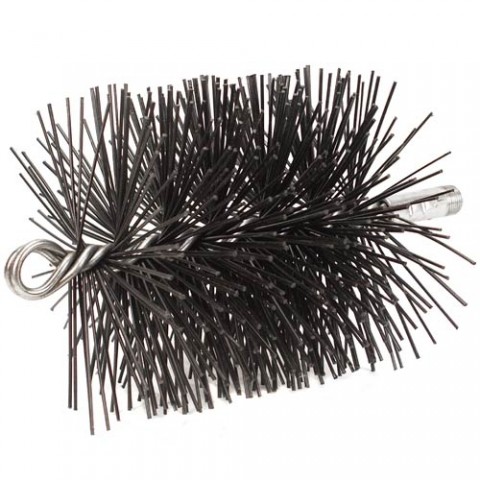
POLY BRUSHES
Poly chimney brushes are recommended for use in metal chimneys as they don't scratch the chimney walls. Standard poly brushes are very stiff and may be difficult to work into a very dirty chimney and also do not go around any bends that may be present in a chimney system. Pre-Fab poly brushes are more flexible and are recommended where bends are present or heavy amounts of creosote make cleaning difficult with standard poly brushes.
Shop Now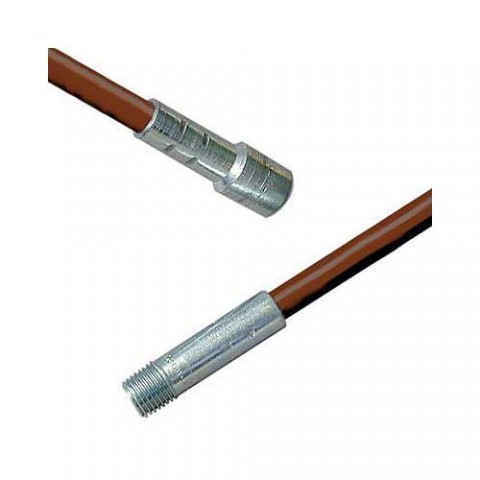
FIBERGLASS RODS
Fiberglass rods do not have a lot of bend in them. They should be used in flues that are pretty much a straight shot. The 5SB-30624M rods will flex up to 90 degrees to allow you to enter the flue through most fireplaces but will not go through a 45 degree elbow in the flue. The 5SB-36048M rods do not have much flex in them at all. They are good for straight flues with heavy creosote buildup requiring strength for pushing through the buildup.
Shop Now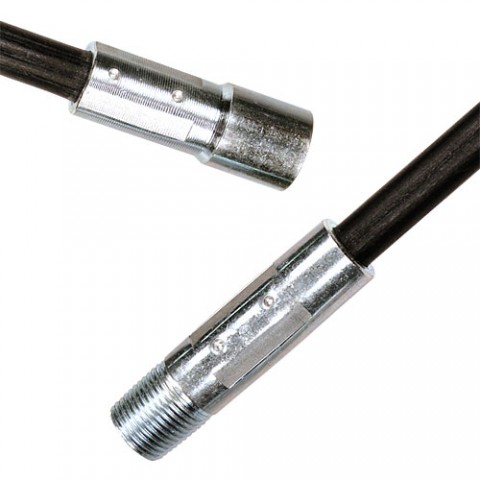
NYLON RODS
Super Flexible Rods are used in chimneys where there are tight bends present. These rods will bend around 90 degree bends or more. Due to the extreme flexibility and thin rod diameter they may become too flexible in long chimney runs. They are best used when the bend is at the end of chimney and can be used in combination with other style rods.
Shop Now
POLYPROPYLENE RODS
Poly chimney brushes are recommended for use in metal chimneys as they don't scratch the chimney walls. Standard poly brushes are very stiff and may be difficult to work into a very dirty chimney and also do not go around any bends that may be present in a chimney system. Pre-Fab poly brushes are more flexible and are recommended where bends are present or heavy amounts of creosote make cleaning difficult with standard poly brushes.
Shop Now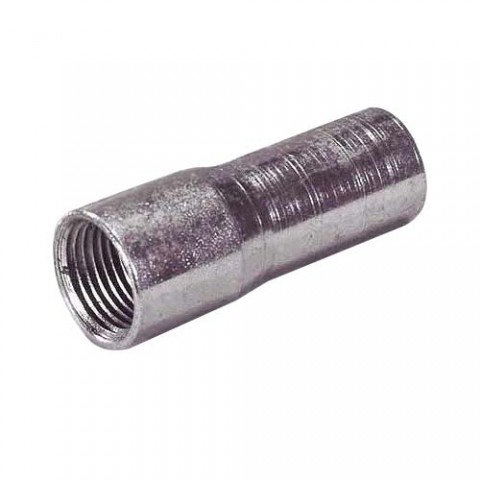
ROD CONNECTORS
Adapters are available to connect Lock-Fast Rod directly to Proflex Rods, quick connects, and several others.
Shop Now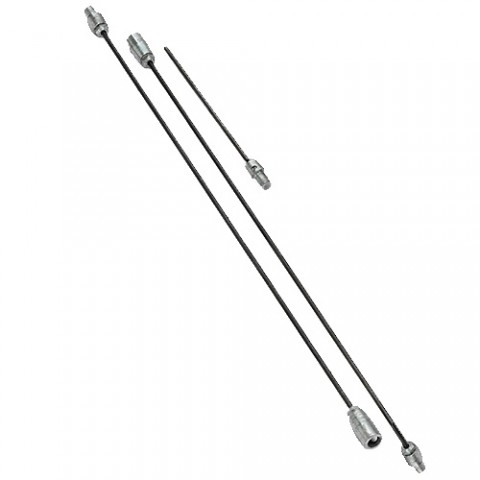
NYLON RODS
ProKleen 5 Foot Steel Rod - The 5' rod is made of 1/4" steel. Use the 1' Starter Rod to insert into your heavy-duty drill and then attach the other rods to your starter rod. These rods may also be used as replacement rods for the ProKleen System. The ProKleen Rods feature a spring-loaded, locking mechanism that won't unscrew. Thus, your drill can rotate your ProKleen System in either a clockwise or counterclockwise direction. 1 Foot Starter Rod and 2.5 Foot Rod sold separately.
Shop Now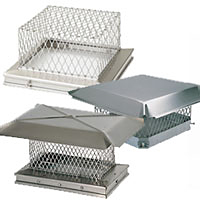
CHIMNEY CAPS
While you are concentrating on finding a brush for your chimney, you might as well consider getting a chimney cap too. Chimney caps not only cure drafting issues they also prevent animals, weather elements, and debris from entering your chimney. Chimney caps also keep water and moisture from penetrating the layers of the chimney liner and causing premature failure and other chimney problems.
Shop Now
